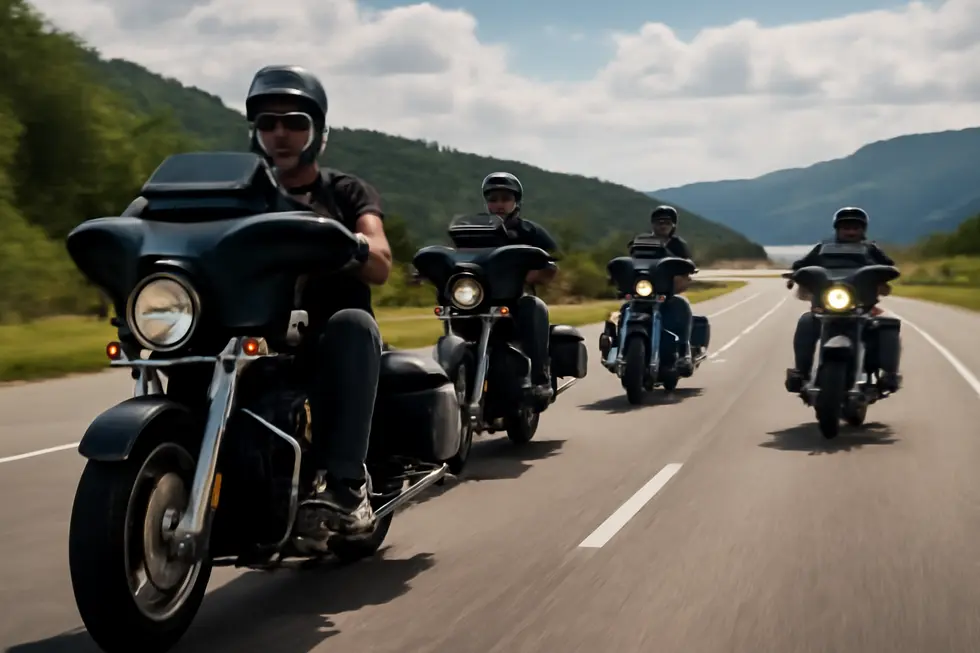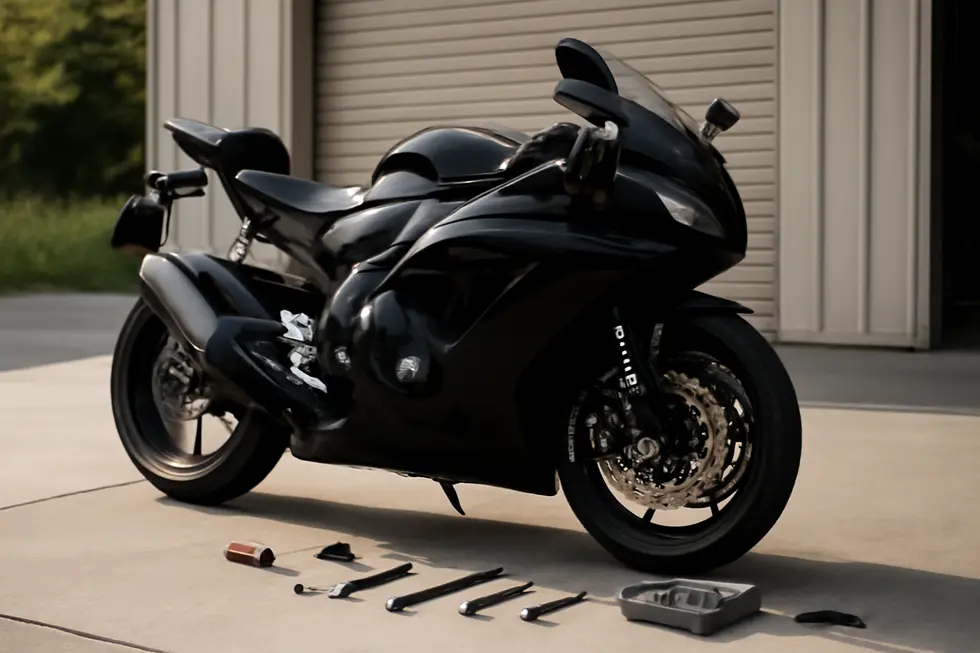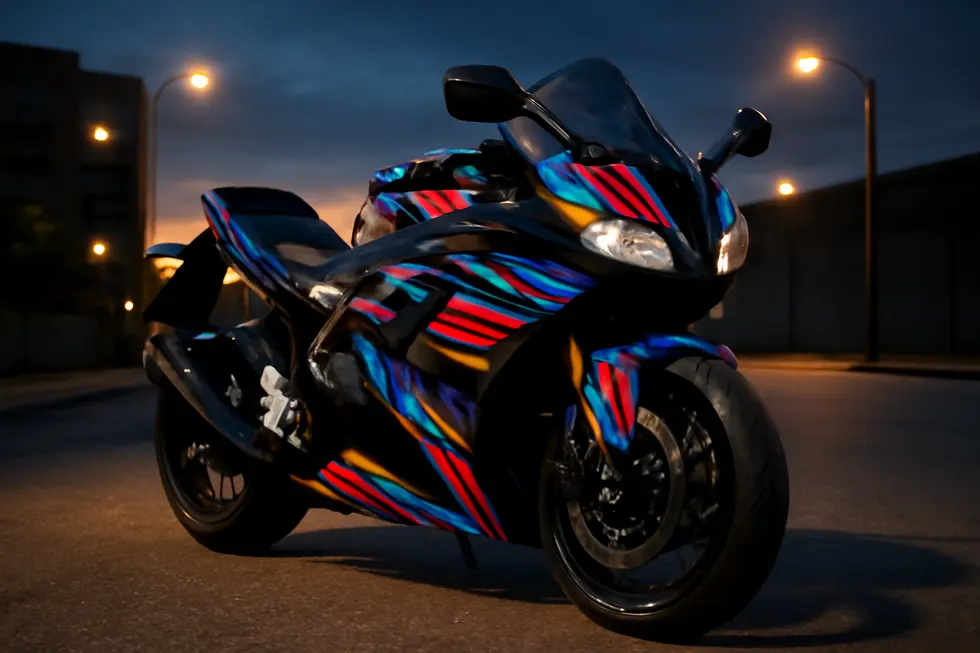Mastering Motorcycle Fairing Repairs: The Best Epoxy Solutions for Business Owners
September 12, 2025 | by summitfairings
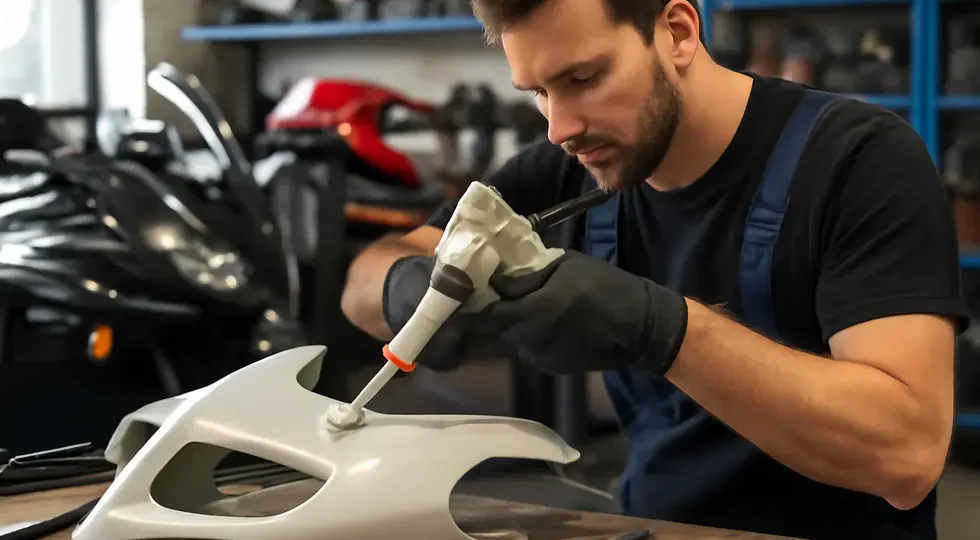
Introduction
Motorcycle fairings are critical for both the aesthetic appeal and aerodynamic performance of bikes, making their maintenance and repair a high priority for business owners in the motorcycle aftermarket and repair industry. Selecting the best epoxy for motorcycle fairings ensures repairs that are not only strong but flexible enough to withstand vibrations and environmental factors such as sunlight exposure. This comprehensive overview will cover essential aspects that every business owner should understand: the advantages of two-part epoxy formulations, the importance of flexibility and UV resistance, effective surface preparation and application techniques, and finishing options with epoxy paints that preserve both strength and appearance. Each chapter builds on these core components, empowering you to offer superior fairing repair services and durable products that meet the demands of discerning riders.
Tables of Contents
Chapter 1: Two-Part Epoxy Formulations as the Best Epoxy for Motorcycle Fairings
- Cutting-Edge Innovations Enhancing Two-Part Epoxy Performance for Motorcycle Fairings
- Balancing Cost and Performance: The Economic Edge of Two-Part Epoxy for Motorcycle Fairings
- How User Experience and Industry Standards Shape Trust in Two-Part Epoxy for Motorcycle Fairings
Chapter 2: Flexibility and UV Resistance in the Best Epoxy for Motorcycle Fairings
- Innovative Resin Formulations and Coatings Enhancing Flexibility and UV Stability for Motorcycle Fairings
- The Economic Advantage of Flexible, UV Resistant Epoxy in Motorcycle Fairing Longevity
- How Flexible, UV-Resistant Epoxy Enhances Sustainability and Rider Safety
Chapter 3: Surface Preparation and Application Techniques for the Best Epoxy for Motorcycle Fairings
- Mastering Surface Preparation: Essential Steps to Maximize Epoxy Adhesion on Motorcycle Fairings
- Mastering Epoxy Application and Layering for Durable Motorcycle Fairing Repairs
- Mastering Finishing and Coating Techniques to Maximize Epoxy Durability on Motorcycle Fairings
Chapter 4: Finishing and Paint Options for the Best Epoxy for Motorcycle Fairings
- Mastering Surface Preparation and Priming for Flawless Epoxy Finishes on Motorcycle Fairings
- Mastering Color and Coating Techniques for Durable and Vibrant Epoxy Finishes on Motorcycle Fairings
- Layered Durability: Advanced Protection and Finishing Techniques for Epoxy-Resin Motorcycle Fairings
Chapter 1: Two-Part Epoxy Formulations as the Best Epoxy for Motorcycle Fairings
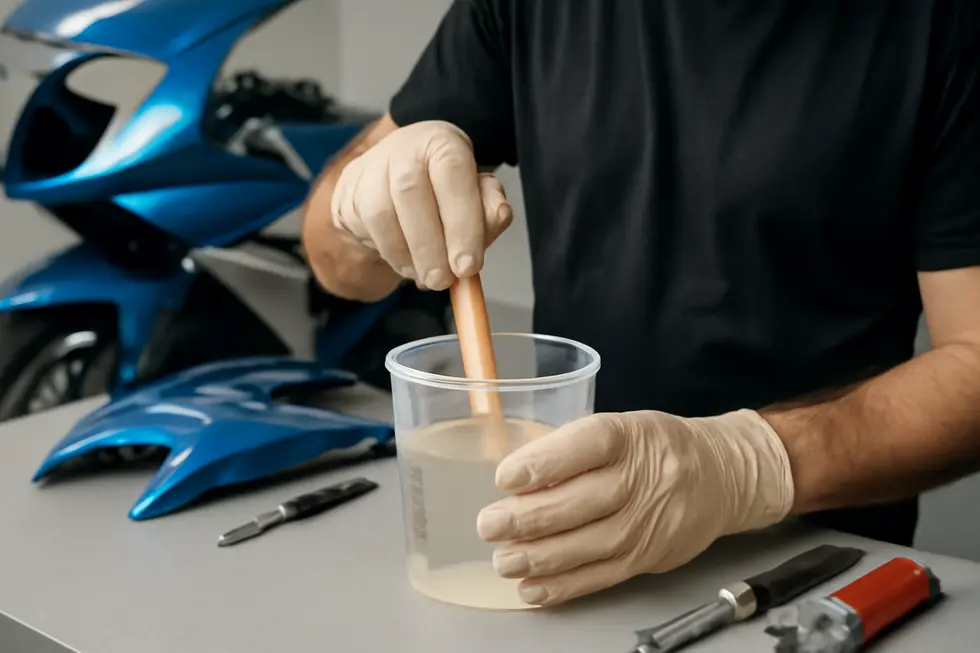
1. Cutting-Edge Innovations Enhancing Two-Part Epoxy Performance for Motorcycle Fairings
Two-part epoxy systems have evolved into the essential adhesive solution for motorcycle fairings, owing to significant technological breakthroughs that enhance their durability, adhesion, and resistance to environmental stresses. These formulations involve a precise blend of resin and hardener that chemically cure to form a resilient composite layer, capable of enduring mechanical impacts, engine heat, and prolonged UV exposure. Recent advances have optimized curing speeds, allowing repairs and manufacturing processes to operate more efficiently without sacrificing the toughness or chemical stability of the cured epoxy. This balance is crucial for motorcyclists who demand both reliability and swift turnaround after repairs.
Moreover, advancements in viscosity regulation facilitate superior flow and wetting characteristics. This ensures the epoxy bonds effectively to the diverse substrates used in fairing construction, such as carbon fiber and fiberglass composites. Enhanced adhesion on these materials translates to stronger repairs and longer-lasting reinforcements, vital for resisting vibrations and stresses encountered during rides. Integrating modern composite manufacturing technologies, like digital twin simulations, further refines epoxy application and curing on complex fairing shapes. Through these virtual models, manufacturers optimize process parameters, minimizing errors and maximizing product consistency.
Noteworthy too is the development of two-component catalyzed aerosol epoxy coatings that deliver flawless, high-gloss finishes with excellent durability. These spray systems enable precise application, improving both the aesthetics and protective qualities of repaired or new fairing surfaces. Such innovations not only meet performance demands but also enhance visual appeal, a priority for many motorcycle enthusiasts.
Collectively, these technological strides secure two-part epoxies as the premier choice for fairing repairs and construction, balancing mechanical strength, environmental resilience, and ease of use. For those interested in a comprehensive understanding of composite manufacturing advancements applicable to motorcycle fairings, detailed industry insights are available in aerospace and automotive composite literature, which share foundational epoxy technologies. More information on tailored fairing options and repair techniques can be found in resources such as this guide to motorcycle fairings.
[1] https://acmanet.org/digital-twins-reveal-hidden-information/
2. Balancing Cost and Performance: The Economic Edge of Two-Part Epoxy for Motorcycle Fairings
Two-part epoxy formulations provide a compelling economic advantage in motorcycle fairing applications due to their exceptional durability and strength. Although the initial material investment may be higher compared to simpler adhesives, their superior bonding capabilities drastically extend the lifespan of fairings, minimizing repair and replacement frequency. This longevity translates directly into reduced maintenance expenses and lower total cost of ownership over time.
The dual-component nature of these epoxies—combining resin with hardener—ensures precise chemical curing that produces strong, flexible bonds capable of withstanding vibration, impacts, and exposure to UV light. Such properties protect fairings from common environmental damage, thereby preventing premature failure and costly refurbishments. Additionally, the production process benefits from the epoxy’s compatibility with advanced manufacturing techniques, like reaction injection molding, that balance efficient medium-volume output while maintaining high-performance material qualities.
Economic gains also arise from assembly improvements. Two-part epoxy adhesives replace traditional mechanical fasteners or welding, thereby simplifying construction and reducing labor costs without sacrificing structural integrity. This allows for lighter, more aerodynamic fairing designs that contribute to improved fuel efficiency and overall motorcycle performance—key market demands as manufacturers pursue weight reduction alongside durability.
While the cost of raw materials is an important factor, the broad performance benefits and streamlined production approach create a favorable cost-benefit balance. This makes two-part epoxies a strategic choice for manufacturers and repair professionals seeking cost-effective, long-lasting solutions for motorcycle fairings.
For more insights on motorcycle fairings that maximize performance and durability, explore the best motorcycle fairings available today.
Reference: Henkel Adhesives guidance on motorcycle fairing repair with epoxy.
3. How User Experience and Industry Standards Shape Trust in Two-Part Epoxy for Motorcycle Fairings
Two-part epoxy formulations have earned a strong reputation among motorcycle enthusiasts and professionals alike for their exceptional performance in fairing repairs and fabrication. These epoxies combine a resin and hardener that, when mixed, deliver a flexible yet robust bond, essential for withstanding the vibrations and impacts typical on motorcycles. Users appreciate the versatility of two-part systems, notably their strong adhesion and excellent sag resistance, which facilitate smooth application on varied surfaces, including challenging vertical areas.
For riders and DIY mechanics, the ability of these epoxies to bond and fill cracks, support shaping, and resist environmental conditions such as water exposure and temperature changes offers great practical value. This usability extends to professional repair shops, where reliability and durability are critical to maintaining both function and aesthetics of motorcycle fairings over time.
On the industry level, two-part epoxy systems are increasingly recognized for their compatibility with composite materials widely used in modern fairings. Their resistance to UV degradation and moisture ensures that repairs and reinforcements preserve their integrity despite harsh outdoor conditions. This environmental resilience contributes to longer component lifespans and reduced maintenance demands, aligning with broader sustainability goals.
While emerging materials like carbon fiber influence fairing design, the balanced combination of strength, adaptability, ease of handling, and cost-effectiveness keeps two-part epoxy formulations central to fairing maintenance and customization. Their proven track record fosters confidence among users who demand both professional-grade results and practical application.
Further insights and detailed advice on selecting and using epoxy for your motorcycle can be found at Summit Fairings’ expert blog. Additionally, comprehensive guidance by leading adhesive manufacturers underlines why two-part epoxy remains the top solution for motorcycle fairings.
Chapter 2: Flexibility and UV Resistance in the Best Epoxy for Motorcycle Fairings
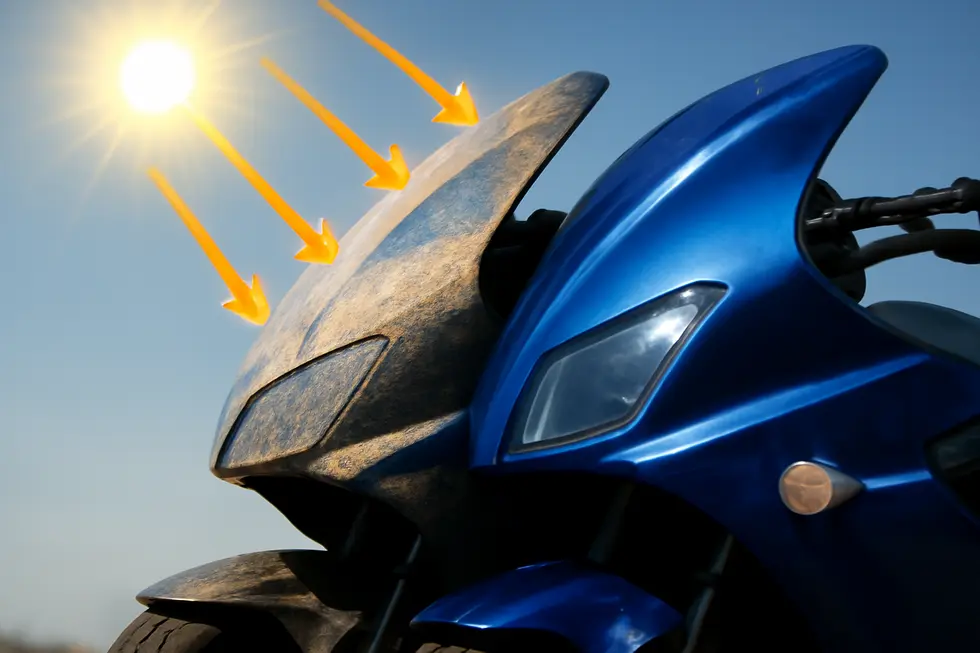
1. Innovative Resin Formulations and Coatings Enhancing Flexibility and UV Stability for Motorcycle Fairings
The evolving demands of motorcycle fairing repairs have driven continuous innovation in epoxy technology, especially in flexibility and UV resistance. Modern epoxy resins balance durability with the ability to absorb vibrations and impacts without cracking or distortion—a critical advancement considering the constant mechanical stress fairings experience during rides. This flexibility is often achieved through composite manufacturing techniques, where epoxy resins are reinforced with materials such as carbon fiber or fiberglass laminates. These composites provide a structure that can flex subtly yet maintain shape integrity, enhancing both strength and resilience.
Beyond physical reinforcement, epoxy formulations now commonly incorporate UV stabilizers or are designed to pair effectively with advanced protective coatings. Conventional epoxy often succumbs to yellowing and brittleness when exposed to sunlight. However, integrating UV-resistant additives within the epoxy matrix prevents degradation at the molecular level, maintaining both clarity and structural performance over time. Complementing this protection, the application of innovative coatings—such as graphene ceramic layers—delivers exceptional UV barrier properties and hardness, extending the fairing’s lifespan and preserving its aesthetic finish.
Cold lamination techniques further optimize the epoxy composite by weaving fiberglass in twill patterns, which enhances mechanical performance while allowing the resin’s UV-resistant chemistry to flourish. Post-application, industrial-grade UV-resistant spray paints and ceramic coatings form an abrasion-resistant shield, safeguarding fairings from environmental damage and chemical exposure.
Together, these technological strides produce epoxy systems tailored for motorcycle fairings, combining resiliency, flexibility, and prolonged UV stability. This integration ensures repairs and enhancements not only withstand harsh riding conditions but also maintain their appearance and integrity. For those seeking additional insights into quality fairing materials and repair methods, exploring a trusted source of motorcycle fairings offers valuable guidance.
External resource: https://adamspolishes.com/products/graphene-ceramic-coating%E2%84%A2-advanced
2. The Economic Advantage of Flexible, UV Resistant Epoxy in Motorcycle Fairing Longevity
Incorporating flexible and UV resistant epoxy into motorcycle fairings delivers significant economic advantages through enhanced durability and extended service life. Motorcycle fairings are subject to constant environmental stress, including intense sunlight and vibrations from road conditions. Epoxies engineered with flexibility absorb mechanical shocks and vibrations effectively, reducing the likelihood of cracks or breaks. Simultaneously, UV resistant properties prevent discoloration, brittleness, and surface degradation, maintaining aesthetic appeal and structural integrity over years of exposure.
Though these specialized epoxies may carry a higher initial cost compared to conventional resins, their ability to extend fairing lifespan results in fewer replacements and repairs. This translates into lower maintenance expenses and minimized downtime for riders and manufacturers. Additionally, the improved durability can reduce warranty claims, benefiting manufacturers’ cost management and reputation.
There is also an indirect economic impact related to performance enhancement. Flexible epoxy composite fairings often allow for lightweight construction, contributing to better fuel efficiency and handling. These factors offer operational cost savings and increased appeal for consumers seeking value and reliability.
From a market perspective, the growing demand for advanced epoxy materials reflects wider acceptance of their cost-effectiveness and durability advantages. While alternatives like carbon fiber composites offer higher strength, flexible UV resistant epoxies strike a more affordable balance suitable for mass production and aftermarket repairs. Innovations in manufacturing processes such as injection molding and 3D printing continue to optimize material utilization and cost efficiency.
For those interested in exploring durable and economical motorcycle fairings, resources such as Explore the Best Motorcycle Fairings at Summit Fairings provide valuable insights into quality options.
Overall, flexible and UV resistant epoxy formulations offer a compelling economic proposition by combining longevity, reduced maintenance, and enhanced rider experience, reinforcing their status as the optimal choice for motorcycle fairings.
For further market data and forecasts on epoxy adhesives, visit the Epoxy Adhesives Market Forecast.
3. How Flexible, UV-Resistant Epoxy Enhances Sustainability and Rider Safety
Flexible and UV-resistant epoxy coatings for motorcycle fairings offer profound societal and environmental advantages by significantly extending the lifespan and preserving the integrity of critical components. The inherent flexibility in these epoxies helps fairings absorb vibrations and shocks common in motorcycle use, preventing cracks and potential failures that could compromise rider safety. Their UV resistance counters damage from prolonged sun exposure, which otherwise leads to yellowing, brittleness, and surface degradation. This preservation of structural and aesthetic quality not only maintains important protective functions and visibility but also upholds the vehicle’s overall appearance, contributing to rider confidence and satisfaction.
From a societal viewpoint, these durable coatings reduce the frequency of repairs and replacements. This lowers maintenance costs and decreases motorcycle downtime, allowing riders to enjoy uninterrupted use. Additionally, less frequent interventions translate into reduced labor and parts expenses, benefiting owners economically while enhancing brand trust through sustained product performance.
Environmentally, flexible, UV-stable epoxies mitigate waste by prolonging fairing usability and reducing part discard rates. This translates into less landfill accumulation and diminished demand for new manufacturing resources. As a result, energy-intensive extraction, production, and transport emissions drop, markedly lowering the ecological footprint tied to fairing components. Moreover, these epoxies guard against degradation that could release microplastics or harmful residues into the environment, addressing pollution concerns associated with material breakdown.
Certain formulations also enable energy-efficient curing methods, further minimizing manufacturing environmental impacts. These combined effects support a circular approach to motorcycle upkeep, emphasizing longevity and sustainability while safeguarding rider well-being. For further details on UV stabilization techniques in coatings, explore Everlight Chemical’s light stabilizer technology.
To learn more about durable motorcycle bodywork solutions, visit the Summit Fairings blog.
Chapter 3: Surface Preparation and Application Techniques for the Best Epoxy for Motorcycle Fairings
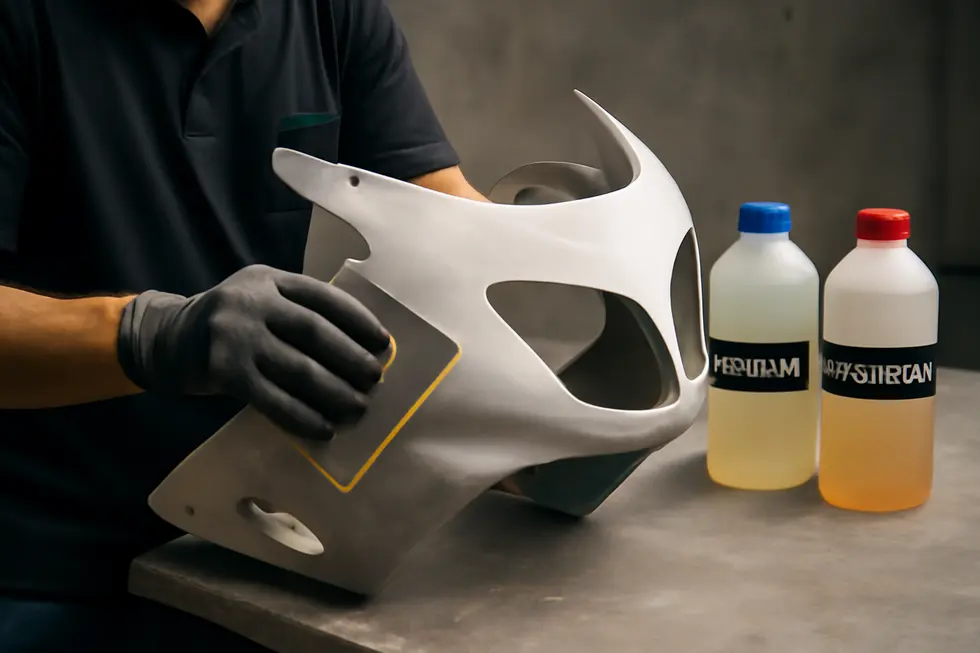
1. Mastering Surface Preparation: Essential Steps to Maximize Epoxy Adhesion on Motorcycle Fairings
Achieving durable repairs and refinished surfaces on motorcycle fairings relies heavily on comprehensive surface preparation techniques tailored for epoxy application. The foundation of optimal adhesion begins with thoroughly cleaning the fairing surface to remove any dirt, grease, oils, and contaminants. Even minute residues can significantly weaken the bonding effectiveness of epoxy resin systems, especially since fairings often endure exposure to environmental grime and road debris.
Following cleaning, the next critical step involves introducing a micro-texture to the surface by abrasive sanding or blasting. Using fine-grit sandpaper—around 280 grit or finer—creates a slightly roughened profile that encourages mechanical interlocking between the epoxy and the substrate. For more stubborn or smooth plastics, abrasive blasting methods can be employed, which ensure even better texture and remove any previously deteriorated coatings or oxidation. This mechanical preparation complements the chemical bonding properties of epoxy, producing a bond resilient to vibration and stress commonly experienced by motorcycles.
For many plastic and composite fairing materials, the application of a compatible epoxy primer before the main resin can further enhance adhesion. The primer acts as a hermetic seal against moisture ingress and promotes corrosion resistance when metal components are part of the assembly. It prepares the surface chemically to accept the subsequent layers uniformly, reducing the risk of delamination or uneven curing.
It is equally important to ensure that all prepared surfaces are completely dry and free of dust or debris just prior to epoxy application. Any residual contamination can create weak points and reduce long-term performance.
During application, multiple thin coats of epoxy or epoxy-based paint are preferable to a single heavy layer. This method improves coverage uniformity and prevents sagging or runs, which can undermine both aesthetics and protective qualities. Heat curing, if compatible with the materials, can refine the finish and add mechanical strength.
These preparation and application techniques, aligned with automotive painting standards but adapted for motorcycle-specific materials, ensure the strongest possible bond and durability under dynamic road conditions. For a deeper understanding of motorcycle fairing materials and their maintenance, explore summit fairings’ expert insights.
Henkel Adhesives provides useful guidance on epoxy primers and surface preparation essentials for plastic and composite substrates.
2. Mastering Epoxy Application and Layering for Durable Motorcycle Fairing Repairs
Achieving a long-lasting, smooth finish when repairing or reinforcing motorcycle fairings depends largely on mastering epoxy application and layering techniques. The process begins with meticulous surface preparation; cleaning the fairing to remove all dirt, grease, and residues is crucial. Sanding the area with medium grit creates a textured surface that dramatically improves epoxy adhesion. Especially for fiberglass components, removing oils and dust ensures the resin bonds properly.
The application itself should never rely on a single thick coat. Instead, multiple thin layers produce superior results by reducing air entrapment and allowing uniform curing. When using fiberglass cloth for structural reinforcement, saturating each layer carefully with epoxy resin eliminates trapped bubbles and strengthens the repair. Gradual layering—from smaller patches feathered into larger sections—helps maintain the fairing’s original shape and rigidity.
Curing time between layers is non-negotiable; rushing this step compromises the bond and risks future cracks. The environment’s temperature and humidity influence cure duration, so controlling workspace conditions is beneficial. Once fully cured, sanding progresses from coarse to fine grits, smoothing out imperfections and preparing the surface for finishing. Minor flaws can be addressed with glazing putty or body filler, ensuring an even base for priming and painting.
Selecting a high-quality thermosetting epoxy resin tailored for automotive or composite repairs guarantees dimensional stability, heat resistance, and compatibility with reinforcement materials. Applying epoxy with brushes or squeegees suited to the repair size helps control coverage, avoiding excess resin which could sag or cause uneven surfaces. Minimizing environmental contaminants during application also contributes to a flawless finish.
This careful, multi-step approach balances structural integrity with aesthetics, providing a repair that endures the stresses of riding and exposure. For detailed visual guidance, this fiberglass repair demonstration offers practical insights into these techniques. To explore a wide variety of durable and affordable motorcycle fairings and related repair tips, visit Summit Fairings’ comprehensive resource at Discover Affordable Motorcycle Fairings at Summit Fairings.
3. Mastering Finishing and Coating Techniques to Maximize Epoxy Durability on Motorcycle Fairings
Achieving lasting durability with epoxy repairs on motorcycle fairings hinges on meticulous finishing and coating practices. After thorough surface cleaning and degreasing to eliminate contaminants, sanding the area with fine grit creates an optimal texture for epoxy adhesion. Applying a high-quality two-part epoxy specifically formulated for fairing repairs ensures the compound remains flexible and resistant to sagging during application. Multiple thin coats, each properly cured, allow shaping and filling to build a robust base without runs or weak spots.
Once fully cured, the epoxy surface requires careful sanding to achieve a smooth, even finish. This step not only enhances the aesthetic appearance but also prepares the surface for subsequent protective coatings. A clear coat or protective top layer is essential, as it guards against ultraviolet radiation, chemical exposure, and abrasion—factors that commonly degrade epoxy and plastic fairings over time. Spray-applied clear coats remain the preferred option for maintaining flexibility while delivering an even, high-quality finish suitable for the contours of motorcycle fairings.
To further enhance protection and color retention, using paint systems designed explicitly for plastic and epoxy surfaces is critical. Applying multiple thin paint layers with proper drying intervals promotes adhesion and prevents peeling or fading. This layered approach—from surface preparation through curing, smoothing, and coating—ensures each repair not only sustains structural integrity but also preserves the fairing’s appearance in demanding riding conditions.
For deeper insights into quality motorcycle fairings and the latest trends in repair materials and techniques, explore resources such as Explore the Best Motorcycle Fairings at Summit Fairings.
This comprehensive finishing strategy maximizes the mechanical strength and longevity of epoxy repairs, effectively maintaining motorcycle fairings against the rigors of road use and environmental wear. For practical guidance and reliable epoxy putty formulations known for their excellence in fairing repair, refer to trusted external resources like the MAS Epoxies Fairing Compound Kit detailed at https://www.campingworld.com/mas-epoxies-fairing-compound-kit-2-pints-331755.html.
Chapter 4: Finishing and Paint Options for the Best Epoxy for Motorcycle Fairings
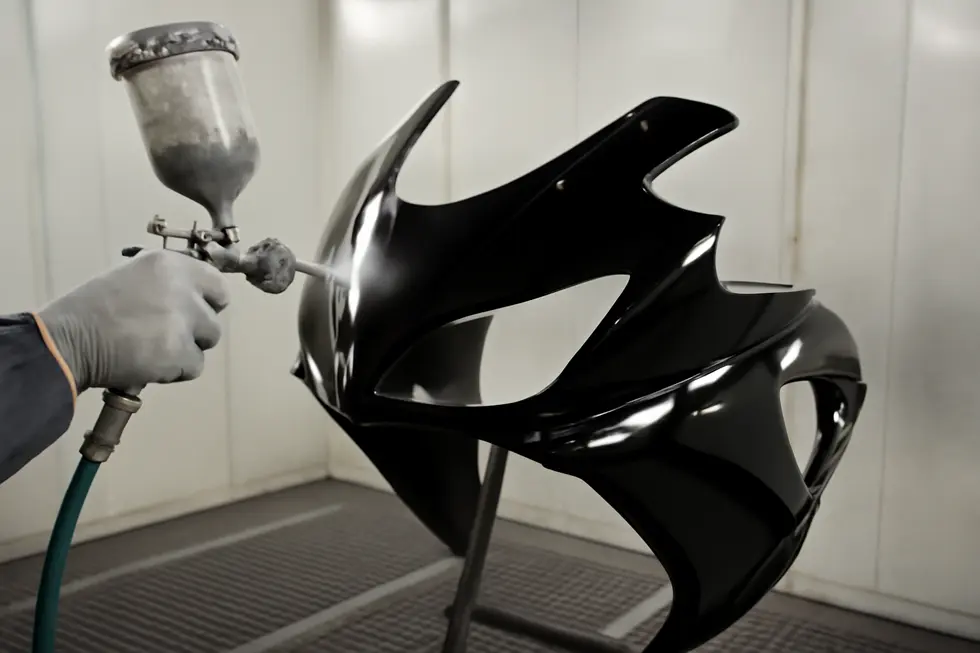
1. Mastering Surface Preparation and Priming for Flawless Epoxy Finishes on Motorcycle Fairings
Achieving a durable and visually appealing finish on motorcycle fairings begins with meticulous surface preparation and priming, which are essential for the best epoxy bonding and paint adhesion. The process starts by thoroughly cleaning the fairing surfaces to remove any grease, dirt, or wax that could interfere with the epoxy’s grip. Using a plastic-safe degreaser ensures contaminants are removed without damaging delicate composite materials.
Next, sanding lays the groundwork for adhesion. Employing fine-grit sandpaper between 600 and 800 grit lightly roughens the surface to promote primer and paint adherence while preserving the fairing’s integrity. Specialized sanding pads aid in reaching contours without damaging the surface. Once sanding is complete, all dust must be cleared via compressed air or tack cloth to prevent imperfections.
Priming then plays a pivotal role. While metal fairing components benefit from an initial etch primer followed by a high-build primer to create a smooth, even canvas, plastic fairings—commonly made from ABS or similar polymers—require plastic-compatible bonding primers. These primers ensure the epoxy and subsequent paint layers attach securely, preventing peeling or flaking.
When applying epoxy resin, thin, multiple coats sprayed evenly are preferred over thick layers to avoid runs and ensure a consistent finish. Automotive- or marine-grade epoxy resins are ideal, offering robustness against heat, chemicals, and weathering. After the epoxy cures fully, a high-quality, two-component catalyzed clear coat protects the finish, providing glossy UV resistance and mechanical durability even under heat exposure reaching 300°F (150°C).
This carefully integrated approach of cleaning, sanding, priming, and applying epoxy with final clear coats guarantees a resilient, professional-grade finish that preserves both the structural and aesthetic qualities of motorcycle fairings. For further insights on quality fairings and repair techniques, visit Explore the Best Motorcycle Fairings at Summit Fairings.
Reference: Henkel Adhesives—Guidance on motorcycle fairing epoxy repair.
2. Mastering Color and Coating Techniques for Durable and Vibrant Epoxy Finishes on Motorcycle Fairings
Achieving a lasting and visually striking finish on motorcycle fairings repaired with epoxy depends heavily on the thoughtful selection and application of color and coating layers. The process typically begins with a high-quality two-part (2K) epoxy primer, which is essential for promoting superior adhesion to plastic or fiberglass substrates. This primer not only fortifies adhesion but also provides much-needed corrosion resistance, protecting fairings from moisture and environmental damage commonly encountered on the road.
Following the primer, the choice of basecoat color plays a crucial role in defining the fairing’s aesthetic. Riders can select from an extensive palette including OEM-matched colors or explore custom blends tailored for a unique appearance. Specialty finishes—such as candy, pearl, and chameleon paints—introduce depth, richness, and color-shifting effects, though they demand careful application techniques and multiple coats to realize their full visual potential.
The final protective barrier is applied through clear coat layers, which enhance gloss and depth while sealing the vibrant colors beneath. These clear coats, when activated and applied with proper flash times, significantly improve resistance to UV exposure, abrasion, and chemical contaminants like oil and gasoline. Such durability is critical given the harsh conditions motorcycle fairings face.
This methodical layering—starting from a robust epoxy primer to a carefully chosen basecoat and finishing with a resilient clear coat—not only ensures the finish adheres effectively but also withstands operational stresses and environmental aging. By executing these steps with precision, enthusiasts and professionals can maintain the repaired fairing’s performance and elevate its appearance to a professional standard.
For additional detailed guidance on epoxy primer and paint application for motorcycle panels, see this comprehensive resource. Furthermore, exploring expert insights on motorcycle fairings can deepen understanding of achieving outstanding finishes; a great place to start is this guide to choosing the best motorcycle fairings.
3. Layered Durability: Advanced Protection and Finishing Techniques for Epoxy-Resin Motorcycle Fairings
Achieving lasting durability and aesthetic appeal in motorcycle fairings repaired or reinforced with epoxy depends largely on a carefully designed multi-layer finishing process. The foundation of this approach is a professional-grade two-component epoxy primer, which excels in bonding tightly to plastics, metals, and composite substrates common in fairings. Such primers provide robust adhesion and corrosion resistance, forming a resilient base that resists chipping and environmental deterioration.
Following priming, the application of a high-quality topcoat enhances both appearance and protective capabilities. Topcoats formulated with acrylic urethane or ceramic compounds are prized for their excellent resistance to ultraviolet rays, abrasion from road debris, and chemical exposures such as fuel and cleaning agents. Since many motorcycle fairings are made from ABS or specialized plastics, it is crucial that primers and paints used are specifically engineered for plastic adhesion to avoid peeling or cracking over time.
The finishing touch involves applying a clear coat or a UV-resistant protective layer. This additional barrier preserves the vibrancy of colors and shields surfaces from scratches, yellowing, and fading—common issues especially prevalent in carbon fiber and painted plastic fairings. Moreover, integrating physical guards or impact-resistant covers on vulnerable sections provides mechanical protection that supplements the chemical defenses against wear and accidental damage.
Together, these stages establish a comprehensive protective system: an epoxy primer seals and prepares surfaces, a durable topcoat adds toughness and color integrity, and a clear or ceramic coating provides long-term resistance to environmental stressors. This structured layering not only maximizes the life and performance of repaired fairings but also maintains their visual appeal under demanding road conditions.
For more insights into quality finishes for motorcycle bodywork, visit Explore the Best Motorcycle Fairings at Summit Fairings.
Reference: Eastwood 2K AeroSpray Epoxy Primer details.
Final thoughts
For business owners seeking to provide top-tier motorcycle fairing repairs, understanding the science and techniques behind the best epoxy solutions is crucial. Employing high-quality, two-part epoxy formulations ensures robust bonding essential for structural integrity. Integrating additives for flexibility and UV resistance elevates the longevity and visual appeal of repairs, crucial for parts exposed to constant vibration and environmental stress. Coupled with meticulous surface preparation and skilled application, these factors create the foundation for durable and reliable fairing repairs. Finally, finishing with specialized epoxy paints provides lasting protection and an attractive finish, enhancing customer satisfaction and product reputation. Mastery of these components empowers businesses to deliver consistent, professional results that stand up to real-world demands, fostering trust and repeat clientele.
Ready to elevate your ride? Summit Fairings delivers premium, custom-fit fairings that blend style and durability. Whether you’re chasing speed or turning heads, we’ve got your bike covered. Don’t wait—transform your machine today. Click, customize, and ride with confidence. Your perfect fairing is just a few clicks away. Act now!
About us
undefined
RELATED POSTS
View all

